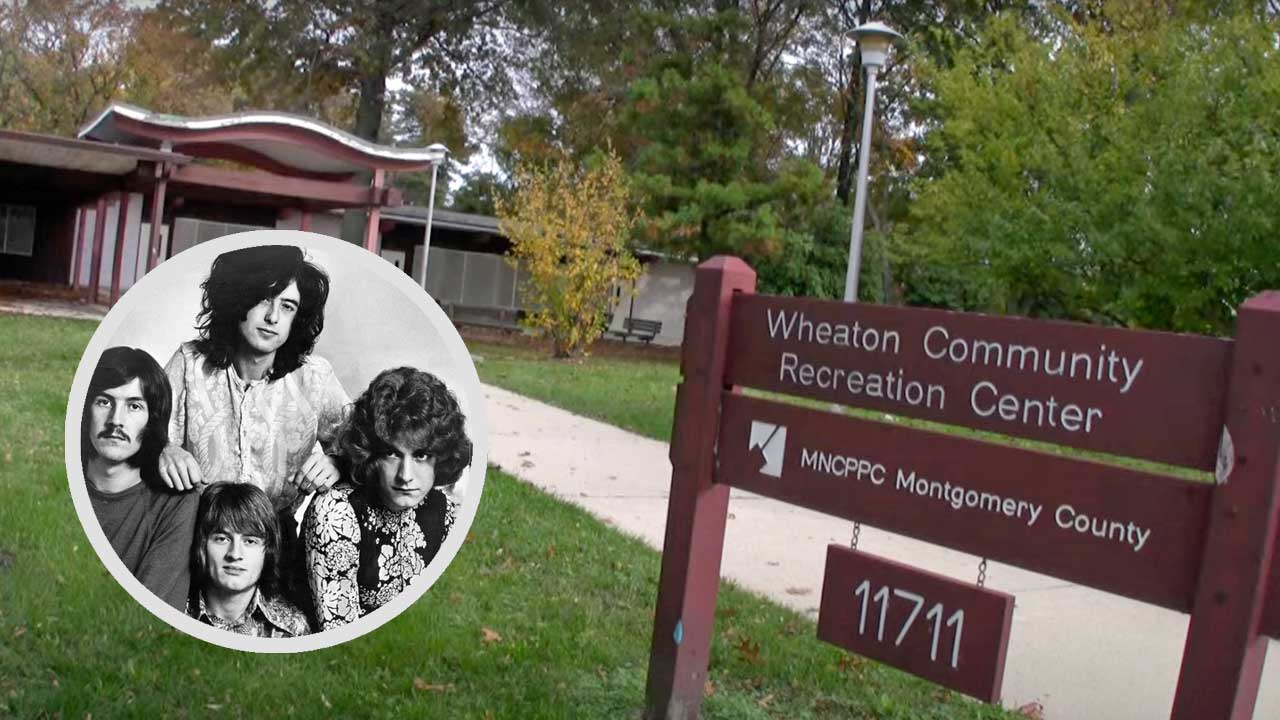
On the night of Richard Nixon's Presidential inauguration, 20th January 1969, Adrienne Ledford skipped her Christian Doctrine class and hitchhiked through the snow to Wheaton, Maryland, to see Led Zeppelin play at a local community centre. It was just three days after the release of the band's first album. In the following days, as Communication Breakdown took local radio station WHMC by storm, people began to take notice.
“People started to talk about this band, and I said, ‘we just saw them at the youth centre!’”, remembers Ledford, who was at the show with just 50 other locals. The attendance was so low that Zeppelin’s manager Peter Grant had to badger promotor Barry Richards for petrol money to get them to their next show.
Like The Sex Pistols at the 100 Club, or Guns N’ Roses at The Marquee, this show has passed into legend. But while the former gigs are famous for the thousands of fans who’ve subsequently claimed to been in attendance but weren’t, the Wheaton performance is different: there’s no evidence that it took place at all.
This mystery was the subject of the 2014 documentary Led Zeppelin Played Here by Jeff Krulik, director of the legendary Heavy Metal Parking Lot. In the film, Krulik interviews local historians, journalists, fans and music industry veterans, manfully attempting to separate the myth from the reality.
“This whole project came about as I was set to do a film called Maryland’s Woodstock, about the Laurel Pop Festival which took place in July 1969, one month before the Woodstock”, Krulik told Classic Rock in 2014. “I wanted to highlight that there was this forgotten pop festival in our area, and basically tell the story of that two-day concert, featuring Led Zeppelin headlining one night.
“But I always knew of the story of this alleged concert, through the book Capitol Rock by Mark Opsasnick and I realised a good story arc as I connected the dots of Led Zeppelin’s performances: in May, they shared a bill as opening band for The Who at Merriweather Post. And in February they were on an opening slot with Vanilla Fudge at the Baltimore Civic Center. But the real curiosity was their first local concert at the Wheaton Youth Center, a non-descript multi-purpose room and gymnasium in a Maryland suburb. But surely this must be an urban legend. Or is it?”
The evidence? The community centre hosted a lot of shows: Nils Lofgren’s Grin, Dr John, Jim Croce, Johnny Winter, Bob Seger System, The Faces, Rare Earth, Spirit, Brownsville Station, Atomic Rooster and The Stooges all played the venue. A radio plugger who worked at Atlantic and worked with Barry Richards says it’s exactly the kind of show the band would have played at the time. Several fans remember the event. The man who worked the door remembers. Richards is insistent it happened, mentioning it in a newspaper interview as long ago as 1970.
But there’s nothing concrete: no contract, no ticket stubs, no newspaper reports, no posters, no flyers, and no photographs. The venue’s director at the time, Sharon Ward Ellis, says it never happened, while the band’s own online archive lists the show as an unconfirmed rumour.
“Barry’s an embellisher”, says local journalist Mike Oberman in the film. “That’s not to say he’s a bad human being, but maybe he believes it happened, and when you believe something, and you say it happened, it’s confabulation: you believe your own untruth”.
“I think Barry’s DJ style and patter lends itself to that sort of embellishment, and he’s hardly the only famous DJ who has ever been guilty of that I’m sure”, said Krulik. “I just think it goes with the territory. But he’s a very convincing embellisher. And you don’t get the career he had by being a total BS artist–he had the cojones to stand behind everything he says and that counts for a lot.
“I actually never found any testimony that was so dubious that it felt untrue; I cross-checked the stories so that I could connect the dots, and it just about all added up in the documentary, albeit without the hard proof people crave. Yet there’s plenty of supporting evidence that I gathered and that was OK by me.
"In my research and many interviews, I did hear enough about other concerts; perhaps those young teenage minds thought they saw Led Zeppelin but they could have instead been seeing some of the many other touring bands that passed through the Wheaton Youth Center during that time”
At the film’s conclusion, Krulik stalks the red carpet as the surviving members of Led Zeppelin show up to be honoured by the Kennedy Center at the venue’s annual gala tribute, and gets to ask Jimmy Page the question. But can the guitarist shed any light on the story? You’ll have to watch the film to find out.
“I’m a believer, Krulik told us. “I’ve always been a believer. I never felt it was a mass hallucination. It was always credible to me. This concert was hastily put together, light years before information travels at the viral speed of light, and the only outlet for promotion was an AM radio station during Barry Richards’ show, which might have kept attendance down.
"With my film, I want to set the record straight, but if I haven’t, then I hope I’ve still created an entertaining documentary about one small story from the days before rock concerts became an industry."







